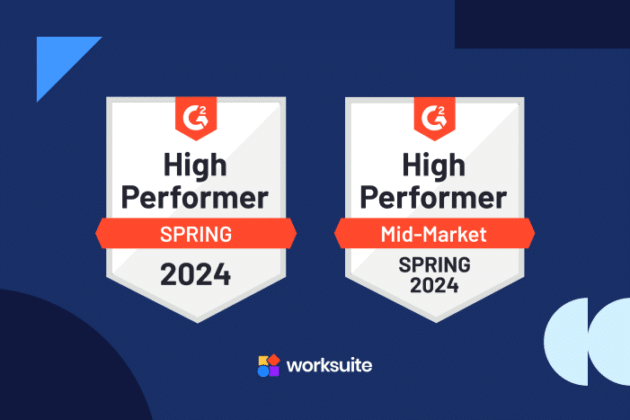
Impact Of A 4 Day Work Week On Side Hustling


As more companies begin trials of four-day work weeks for their employees, the question needs to be asked – what will people do with their extra day of freedom?
For many people, this could be a great opportunity to spend more time with family, get into the great outdoors, or simply kick back at home.
Many people will devote this extra time exploring their passions, and we would undoubtedly see an uptick in short-term courses – but a lot of workers will choose to pursue side hustles and start freelancing in the areas they eventually want to transition into.
Let’s take a look at the impact of a four-day work week on side hustling.
The growth of side hustling
Employees often begin side hustles as a way to generate more income. But many people find that side hustles also give them a much needed creative outlet and let them explore their personal interests outside of the 9 to 5 grind.
A rising number of employees are realizing the potential of combining their existing jobs with freelancing or side hustles – either to help them upskill, get in touch with their entrepreneurial side, or to earn extra cash from skills they might already have. This number will continue to grow once employees have an extra day of free time on their hands.
For example, your full time designer might also be a good copywriter, and decide to take up some freelance writing work on the side now they have a four day work week. Or, you might have a staff photographer that also makes handcrafts – and their shortened work week now gives them a great opportunity to build and grow an ecommerce store to sell their products on the side.
Since 2020, 19% of adults in the UK have started a side hustle, with 16% of these motivated entrepreneurs saying their new side hustle is now bringing in an extra £1,000 every month. Not bad!
A study by Zapier found that 34% of Americans also have a side hustle – with a further 61 million planning to start a side business at some point.
If four day work weeks are successful – it stands to reason that a large percentage of employees will try their hand at some form of freelancing or side hustling, meaning there will be a potentially explosive growth of new solopreneurs around the world.
Popular side hustles for employees
Most employees will begin their side hustle journey at one of these common starting points.
Freelancing
If your employees have a variety of skills in their resume, it makes sense for them to earn extra money and pursue their passions – if it doesn’t conflict with their full time job in any way.
Freelancers can start with zero skills or experience and work their way up to well paid gigs quite quickly. A recent study showed that 60% of people who left traditional employment roles now earn more as freelancers than they did when working full time.
So with the growth of the freelance industry comes the opportunity for more employees to explore the possibility of freelancing full time if they can realize the potential of this side hustle.
Blogging
Blogging can of course be done on a freelance basis, simply writing articles for other companies. But many employees might opt to start their own blog writing about something they’re passionate about.
The blogging industry is huge – and in the USA alone, there are estimated to be over 31 million bloggers creating content on everything from cats to fashion to quantum physics.
The potential to make thousands of dollars a month is definitely a drawcard here. All you need is a laptop, some basic website building skills, and a sprinkling of SEO knowledge.
A four day work week would enable employees to write more posts for their blog each month, monetize them with ads or affiliate marketing, and start earning some relatively passive income on the side of their full time job.
Ecommerce
Dropshipping, Shopify stores, Etsy, Amazon FBA, print on demand, digital products – the amount of opportunities for side hustlers to start selling things online is huge, and it’s an attractive option for people who have just discovered the joys of a four day work week.
It’s cheap to get started, and often doesn’t even require any outlay to start selling things and making more money every week.
Side hustling pitfalls to avoid
Whether you’re a freelancer or an employer, it pays to be aware of the potential problems that could arise from side hustling.
Employment contracts need to be taken into account in case any of the clauses affect an employee’s side hustle endeavors. These might include aspects such as:
Tax requirements
From the employee side, this can be easily overlooked if you’ve always had your employer handling taxes.
The money earned from a side hustle can feel a lot like “free” money, but the tax man will definitely come for a cut of these earnings at some point. It’s advisable for any new side-hustlers to get professional tax advice before they start out.
Non-compete clause
This is a fairly standard clause in employee contracts. Even if your company only has a simple independent contractor agreement, it’s essential that this clause is included.
Non-compete clauses should be checked closely in case a side hustle activity breaches what’s in the contract. The type and duration of non-compete clauses could mean a side hustle needs to be shelved for a while, or a different type of side hustle needs to be thought of.
Non-disclosure agreement
Similarly, if a non-disclosure agreement has been signed between an employer and employee, this needs to be finely combed through in case a side hustle breaches any elements of the document.
Depending on the employee’s new side hustle, they could risk accidentally running into complicated legal problems – resulting in expensive fines, the loss of their job, and an untimely end to their new business.
Intellectual property agreement
If there’s a contract clause or separate agreement that relates to intellectual property, this could have an impact on potential side hustles – especially if an employee intends to use something they’ve created while in their full time role. Protecting your company’s data and other sensitive data is paramount when you’re working with freelance contractors.
Carefully checking what’s been agreed to in terms of IP between an employer and employee can prevent future problems, and enable employees to confidently grow their side hustle.
Combining full time work with freelancing
The greatest pitfall when it comes to side hustling is the time and energy it takes from employees. Even with a four day work week, growing a new side project isn’t easy – there are always a million things to do and problems to overcome.
For employees, it can be difficult to leave the side hustle “at home” while they’re at work. It’s exciting, it’s challenging – and, it’s potentially a way for them to transition to freelancing on the full time basis.
It’s super important that employees don’t try to juggle their working hours with growing a new side hustle at the same time. But with the rise in four day work weeks around the globe, it will become even easier for employees to have the best of both worlds.
As employers, it’s in your best interests to embrace the rise of side hustling. With four day work weeks, it’s inevitable that your employees will pursue other opportunities in their spare time – whether it’s for passion or for economic reasons.
Rather than trying to prevent this happening with strict employment contracts, there’s an amazing opportunity to create internal marketplaces and offer freelance opportunities for full time employees that might like to take up extra contract gigs in their spare time.






